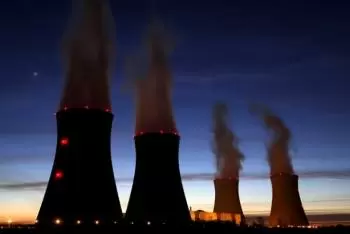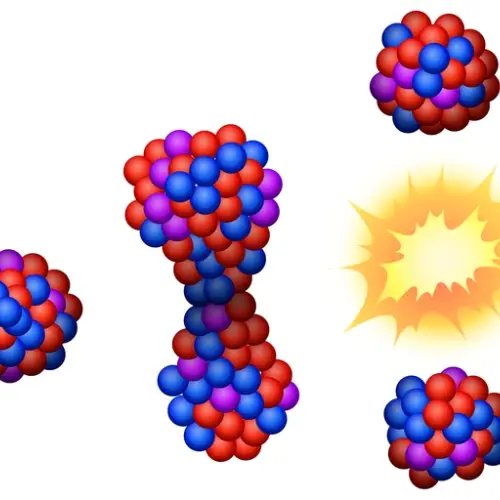
Nuclear energy is an energy source fueled by uranium. Therefore, to determine whether nuclear energy is renewable, we need to look at whether uranium is renewable.
Uranium is a mineral that is found naturally on Earth. A small amount of uranium can generate a lot of energy, so it seems like an unlimited source, but this is not the case. Consumed uranium cannot be regenerated and is therefore not renewable.
For many years the main source of electrical energy was coal, but the effects of the emission of gases that contribute to climate change have forced us to look for more sustainable energy alternatives: clean energy. Some examples of clean energy are solar energy, wind energy or nuclear energy.
What is uranium?
Uranium is a natural energy resource found in the ground and mined for use as nuclear fuel. The characteristic that makes uranium ideal for nuclear energy is that it is very unstable and therefore very prone to breaking apart (nuclear fission reaction). When it breaks apart, it releases a large amount of energy that can be converted into electricity.
This mineral is found in small quantities throughout the world, but large reserves exist in some countries, such as Australia, Canada and Kazakhstan.
How do you get electricity from uranium?
 Nuclear power plants are facilities that cause uranium atoms to break in a controlled manner. This is what is called nuclear fission and it occurs in a nuclear reactor within the plant.
Nuclear power plants are facilities that cause uranium atoms to break in a controlled manner. This is what is called nuclear fission and it occurs in a nuclear reactor within the plant.
These reactions generate a large amount of thermal energy that is used to generate water vapor. The steam drives turbines that are connected to an alternator. The alternator is responsible for generating electricity.
Currently, all nuclear reactors in operation are fission reactors fueled by uranium.
On the other hand, energy can also be obtained by fusing two atoms. This type of energy is called nuclear fusion, but it is still in the development phase. The fuel for nuclear fusion is hydrogen. So, in this case, due to the abundance of these hydrogen atoms on Earth, nuclear fusion is practically considered an inexhaustible source.
Advantages and disadvantages of nuclear energy
Advantages of using this non-renewable energy resource:
-
A large amount of electrical energy can be obtained with very little uranium.
-
It is considered a clean energy because it does not emit greenhouse gases outside, thus it does not contribute to global warming of the planet.
-
All energy generated by nuclear energy implies a reduction in the energy produced by thermal power plants. Therefore, a reduction in the use of fossil fuels (mainly natural gas and coal).
-
Weather conditions do not influence the production of electrical energy obtained. This makes it possible to establish a planning of electrical production.
Disadvantages of using nuclear energy:
-
Although accidents are rare, those that do occur are extremely dangerous for the environment and public health.
-
The nuclear fuel used is limited.
-
Nuclear power plants are potential targets for attacks.
-
It generates radioactive waste that must be managed and stored for years before its radioactivity levels are reduced. Some of this nuclear material remains active for millions of years.
Conclusion
Uranium is a mineral found naturally in the Earth's crust. It is primarily used as fuel to generate electricity in nuclear power plants.
Although large amounts of energy can be obtained from a small amount of uranium, it cannot be regenerated and, therefore, we can conclude that uranium is not renewable.